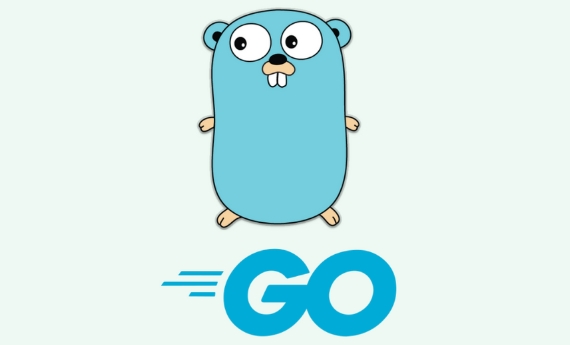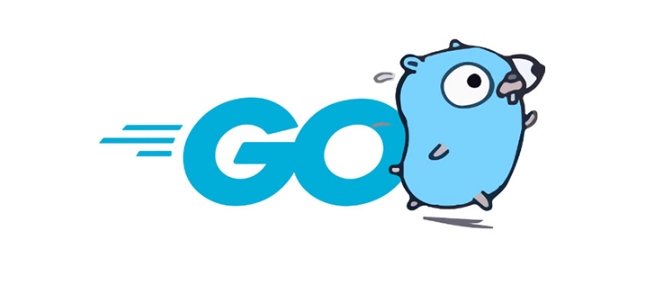 Backend Development
Backend Development
 Golang
Golang
 Comparing Dependency Management Systems: Go Modules vs Python Pip/Poetry
Comparing Dependency Management Systems: Go Modules vs Python Pip/Poetry
Comparing Dependency Management Systems: Go Modules vs Python Pip/Poetry
Jul 02, 2025 pm 04:54 PMThe Go module and Python's pip (or Poetry) have the same goals in dependency management, but the design philosophy and implementation methods are different. The Go module ensures version compatibility and construction predictability through semantic import version control and minimum version selection (MVS), while Python relies on locking files and SAT solvers to handle complex dependencies; the Go module has built-in toolchain, unified standards to reduce team confusion, Python is flexible but fragmented, Poetry improves the experience but increases complexity; Go uses go.mod go.sum to ensure reproducible construction, and Poetry achieves similar effects through pyproject.toml poetry.lock; overall, Go pursues conciseness, and Python provides flexibility but requires trade-offs on predictability and learning curve.

Go modules and Python's pip (with or without Poetry) serve similar purposes—managing dependencies for your project—but they work in pretty different ways. If you've used both, you might have noticed that while the end goal is the same, the tools feel quite distinct in how they handle versioning, reproducibility, and even how they integrate into the development workflow.

Let's break it down.

Version Handling: Semantic Import vs Requirements Files
In Go modules, versioning is baked directly into the import paths. When you import a package like github.com/some/module/v2 , the /v2 part isn't just a folder—it tells Go which major version you're using. This enforces what's called semantic import versioning , which helps avoid conflicts between major versions in the same project.
Python, on the other hand, uses requirements files ( requirements.txt ) or more modern tools like Poetry to specify package versions. With pip alone, you often pin versions manually (eg, requests==2.26.0 ), and it's easy to run into issues where two packages want incompatible versions of the same dependency. Poetry tries to smooth this out by managing a lock file ( poetry.lock ) and resolving dependencies during install.

So:
- Go modules use versioned import paths to enforce compatibility
- Python relies on lock files or pinned versions to manage conflicts
This difference affects how predictable upgrades are and how cleanly multiple versions can coexist.
Dependency Resolution: Minimal Version Selection vs SAT Solver
One of the cooler things about Go modules is its use of Minimal Version Selection (MVS). When building your dependency tree, Go picks the minimum versions required by all dependencies. It sounds counterintuitive at first, but it makes version resolution fast and determine.
Python's pip (especially with tools like pip-tools or Poetry) leans on a SAT solver —a constraint satisfaction algorithm that tries to find a set of package versions that all work together. While powerful, this approach can sometimes be slower and more opaque. You might not always know why one version got picked over another unless you dig into the logs.
To sum up:
- Go keeps it simple with MVS
- Python tools go deep with SAT solvers for complex cases
If you're dealing with huge dependency trees, this distinction really matters.
Tool Integration and Ecosystem Expectations
Go modules are built into the Go toolchain. Once you go mod init , everything from fetching to vendoring is handled through standard commands like go get , go mod tidy , etc. There's no need for an external tool beyond what comes with the language.
Python doesn't have one unified system. Pip has been around forever, but it wasn't designed with full dependency resolution in mind. That's where Poetry comes in—it wraps dependency management, virtual environments, and packaging into a single tool. But because Python projects vary so much, you'll still see a lot of variation in how people structure their environments and lock files.
A few points to note:
- Go modules are standardized and opinionated
- Python tools are modular and flexible, but fragmented
- Poetry improves the experience but adds complexity
This means that while Go gives you less choice, it also reduces confusion across teams. Python offers flexibility but can lead to more setup variation.
Reproducibility and Lock Files
Go modules generate a go.mod file that lists direct dependencies and their required versions. The go.sum file ensures cryptographic integrity of downloaded modules. These files together make builds highly reproducible across machines.
Python traditionally relied on requirements.txt , which could miss transitive dependencies unless explicitly generated with pip freeze . Tools like Poetry introduce a poetry.lock file, which pins every dependency version exactly, making builds more reliable—similar to go.sum .
In short:
- Go uses
go.modgo.sum - Poetry uses
pyproject.tomlpoetry.lock
Both systems now offer solid reproducibility, though Go had a head start in making it standard.
Final Thoughts
The differences between Go modules and Python dependency tools come down to philosophy and design goals. Go opts for simplicity, consistency, and tight integration with the language. Python offers flexibility, but that comes with trade-offs in prediction and learning curve, especially when using only pip.
Poetry definitely closes the gap in Python land, offering a better developer experience and more robust dependency handling. Still, if you're moving between Go and Python projects, it's worth getting comfortable with both approaches—you'll probably switch between them depending on the ecosystem you're working in.
Basically that's it.
The above is the detailed content of Comparing Dependency Management Systems: Go Modules vs Python Pip/Poetry. For more information, please follow other related articles on the PHP Chinese website!

Hot AI Tools

Undress AI Tool
Undress images for free

Undresser.AI Undress
AI-powered app for creating realistic nude photos

AI Clothes Remover
Online AI tool for removing clothes from photos.

Clothoff.io
AI clothes remover

Video Face Swap
Swap faces in any video effortlessly with our completely free AI face swap tool!

Hot Article

Hot Tools

Notepad++7.3.1
Easy-to-use and free code editor

SublimeText3 Chinese version
Chinese version, very easy to use

Zend Studio 13.0.1
Powerful PHP integrated development environment

Dreamweaver CS6
Visual web development tools

SublimeText3 Mac version
God-level code editing software (SublimeText3)

Hot Topics
 Guide to setting up Maven local libraries: efficiently manage project dependencies
Feb 19, 2024 am 11:47 AM
Guide to setting up Maven local libraries: efficiently manage project dependencies
Feb 19, 2024 am 11:47 AM
Maven local warehouse configuration guide: Easily manage project dependencies. With the development of software development, project dependency package management has become more and more important. As an excellent build tool and dependency management tool, Maven plays a vital role in the project development process. Maven will download project dependencies from the central warehouse by default, but sometimes we need to save some specific dependency packages to the local warehouse for offline use or to avoid network instability. This article will introduce how to configure Maven local warehouse for easy management
 How to manage dependencies of C++ code?
Nov 04, 2023 pm 03:45 PM
How to manage dependencies of C++ code?
Nov 04, 2023 pm 03:45 PM
How to manage dependencies in C++ code? As a widely used programming language, C++ is often used to develop applications involving underlying hardware, system level, or high-performance requirements. In actual development, C++ projects often involve various libraries, frameworks and other dependencies. Therefore, code dependency management becomes particularly important. This article will introduce several common C++ code dependency management methods to help developers better manage dependencies in projects. 1. Manually copy dependent libraries. The simplest dependency management method is to manually copy the required
 Composer's Purpose: Managing Project Dependencies in PHP
Apr 30, 2025 am 12:01 AM
Composer's Purpose: Managing Project Dependencies in PHP
Apr 30, 2025 am 12:01 AM
We need Composer because it can effectively manage dependencies of PHP projects and avoid the hassle of version conflicts and manual library management. Composer declares dependencies through composer.json and uses composer.lock to ensure the version consistency, simplifying the dependency management process and improving project stability and development efficiency.
 * Java package management and dependencies: how to keep your code base clean and maintainable
Apr 24, 2024 pm 02:33 PM
* Java package management and dependencies: how to keep your code base clean and maintainable
Apr 24, 2024 pm 02:33 PM
Question: How to manage Java function packages and dependencies? Answer: Use a package manager such as Maven or Gradle to declare dependencies. Specify the coordinates and scope of the dependency in the pom.xml or build.gradle file. Build the project using Maven or Gradle commands to resolve and manage dependencies.
 What is Composer and how is it related to PHP?
May 12, 2023 pm 08:31 PM
What is Composer and how is it related to PHP?
May 12, 2023 pm 08:31 PM
With the rapid development of modern web development technology, dependency management has become an increasingly important issue. Whether it is front-end or back-end development, we need to introduce a variety of libraries and frameworks to achieve higher development efficiency and better application performance. The organization, version control and installation management of these libraries and frameworks have become a difficult problem worth thinking about and solving. Composer is an open source tool launched to solve dependency management problems in PHP application development. It works similar to Node.js
 What are the common dependency management issues in the Golang framework?
Jun 05, 2024 pm 07:27 PM
What are the common dependency management issues in the Golang framework?
Jun 05, 2024 pm 07:27 PM
Common problems and solutions in Go framework dependency management: Dependency conflicts: Use dependency management tools, specify the accepted version range, and check for dependency conflicts. Vendor lock-in: Resolved by code duplication, GoModulesV2 file locking, or regular cleaning of the vendor directory. Security vulnerabilities: Use security auditing tools, choose reputable providers, monitor security bulletins and keep dependencies updated.
 Maven Dugu Nine Swords: Java construction has no tricks to win
Mar 08, 2024 pm 01:20 PM
Maven Dugu Nine Swords: Java construction has no tricks to win
Mar 08, 2024 pm 01:20 PM
1. Maven's core idea is to follow conventions rather than configurations. It provides a set of default rules to guide the project construction process, and developers only need to make minor customizations based on specific needs. This strategy of winning without any tricks gives Maven extremely high flexibility, making it suitable for various Java projects. 2. Project structure convention Maven has strict conventions on project structure, including directory organization and file naming rules. The project root directory generally contains the following subdirectories: src/main/java: stores source code src/main/resources: stores resource files src/test/java: stores test code src/test/resources: stores
 Analysis of Maven's core functions and features: Explore Maven's five major functions
Jan 28, 2024 am 08:44 AM
Analysis of Maven's core functions and features: Explore Maven's five major functions
Jan 28, 2024 am 08:44 AM
Maven is a Java-based build automation tool that is widely used for building, dependency management, and project management of software projects. It defines the structure and dependencies of the project by using a unified build description file (pom.xml). Maven has many functions and features. This article will introduce the five core functions of Maven. Dependency management: Maven helps developers manage project dependencies, simplifying dependency management on third-party libraries during the build process. By declaring dependencies in pom.xml file and their





